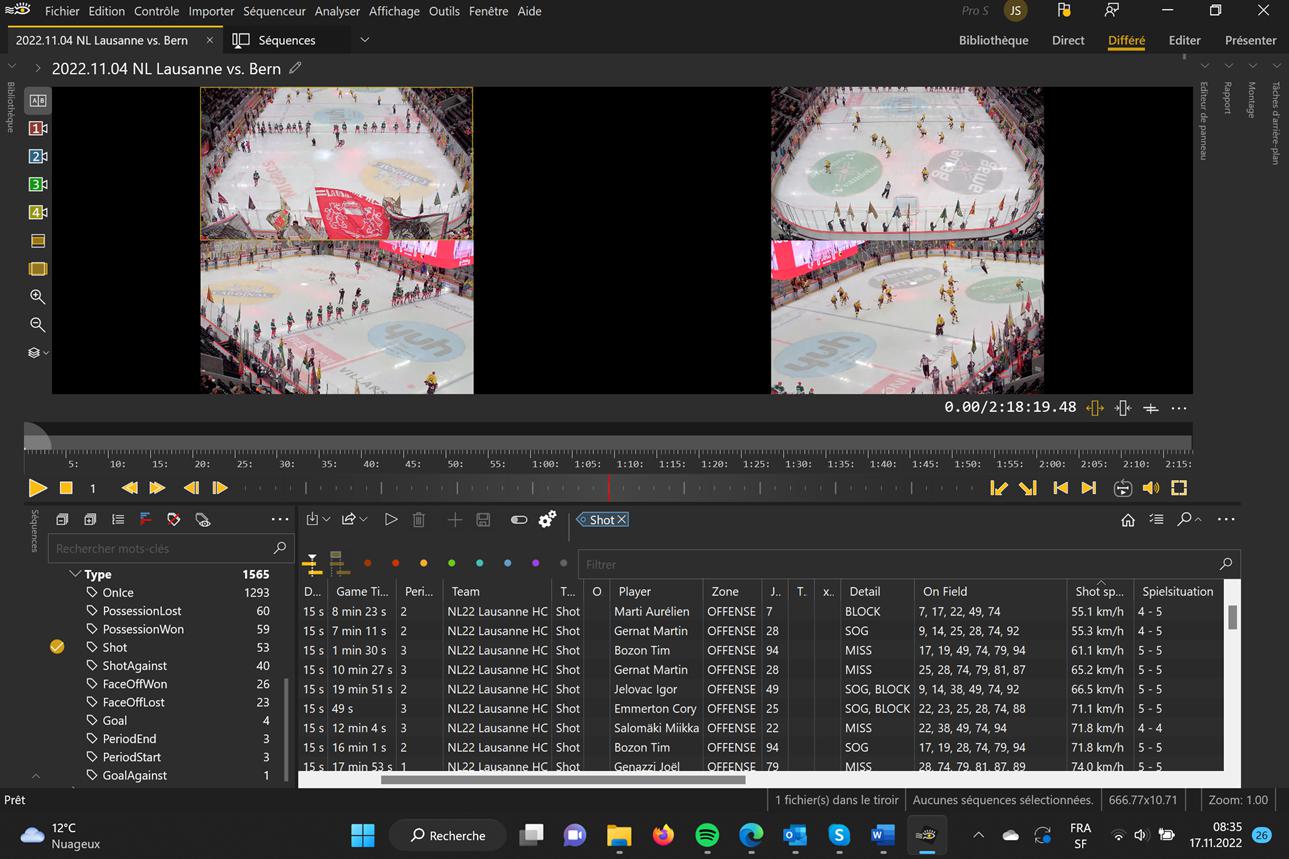EPFL researchers have teamed up with Dartfish and the Lausanne Hockey Club to push the boundaries of sports-performance analysis by applying computer vision and machine-learning technology to action on the ice.
While there's no substitute for long hours of training, sports video analysis has become a must-have in the race for medals. Dartfish, an EPFL spin-off founded in 1999, specializes in precisely this field; its technology lets athletes and coaches in both individual and team sports review video footage and data - both live and recorded - and develop tactical strategies.
Dartfish's technology relies on an automated human-detection and tracking system. But maintaining high standards of accuracy and reliability is a challenge. That's where the researchers at EPFL's Visual Intelligence for Transportation laboratory (VITA) come into play. "We use cameras to detect, track and forecast human behaviors," says Alexandre Alahi, head of the VITA Lab. "Our cameras are placed on cars, in buildings - and now, sports arenas."
Around a year ago, Alahi's research group teamed up with Dartfish on a project funded by Innosuisse, the Swiss Innovation Agency. Together, they aim to develop a new kind of video analysis system that would combine the VITA Lab's computer vision technology with Dartfish's sports-focused expertise. And because - in ice hockey at least - a strong offensive line needs three players, they chose the Lausanne Hockey Club (LHC) as the testing ground for their device.
Tests under real-world conditions
The scientists installed ten cameras in the Vaudoise Aréna, which is where LHC plays its home games: four on the ceiling to track players, the referees, and the puck, and six around the edge of the ice to identify the players. The researchers have already started reviewing several recorded matches, using the footage and associated data to train their algorithms on the new environment. "So far, we've achieved a 94% accuracy rate when it comes to detection," says Alahi. But the tracking part of the equation is considerably more difficult. To overcome this hurdle, the researchers will develop new methods based on players' body poses. This should generate more reliable results in the tracking of individuals.
Dartfish's system, once complete, will produce three types of data. CEO Jean-Sebastien Mérieux explains: "First, it'll record individual players' positions every 20 milliseconds. Second, it'll generate match statistics showing how far each player traveled, how many shots he took, how long he spent on the ice, and so on. And third, it'll perform fully automated match sequencing - something that today is done mostly manually."

"The growing relationship between EPFL and LHC is building a foundation that increases the potential of LHC players, the club and the academy," says John Fust, the LHC sports director. "Our partnership will allow LHC to reach new heights on and off the ice." Quirin Söhnlein, head of performance at LHC, adds: "The detailed statistics will give us a clear advantage, allowing us to take our match analyses to the next level."
Better algorithms with less training
Nowadays, the field of machine learning reaches impressive results with massive amount of examples. "That means the more data you have, the better the algorithms perform," explains Alahi. "But we want to develop new methods that deliver high level of performance with only a limited number of examples." He sees the joint research with LHC as an opportunity to advance AI models with real-world problems. "Ultimately, we'd like to come up with an affordable human-analysis system that works with any type of camera and in any type of setting - from predicting if a pedestrian will jaywalk in urban environments to predicting the collective behavior in team sports."
A living laboratory
This research - yet another example of the "living laboratory" approach - will also help strengthen ties across the industry. "It's an opportunity to accelerate technology transfer by getting end users, R&D labs, and the businesses marketing the technology to work together early-on in the development process," says Pascal Vuilliomenet, who initiated the collaboration between EPFL, Dartfish and the LHC through EPFL's SportTech initiative. "It's an approach that can be duplicated in other sports." This research will further anchor the Lausanne region as a hotbed of sports innovation, paving the way to promising new developments down the line.






